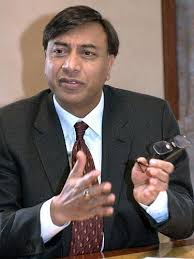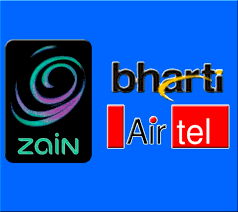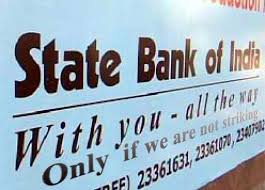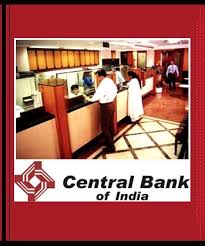 Source:HS Rao/PTI / London March 27, 2010, 13:26 IST
NRI steel baron Lakshmi Mittal, owner of the world's largest
Source:HS Rao/PTI / London March 27, 2010, 13:26 IST
NRI steel baron Lakshmi Mittal, owner of the world's largest
steel company ArcelorMittal, is the richest Asian in Britain for the
year 2010 with an estimated wealth of 17 billion pound.
According to the Asian Rich List 2010, brought out by Eastern Eye, a publication of the Asian Media & Marketing Group, 59-year-old Mittal is followed by the Hinduja brothers, Srichand and Gopichand, with 8 billion pound, Anil Agarwal of mining group Vedanta Resources with 4 billion pound, Sir Anwar Pervez of Bestways with 715 million pound and NRI industrialist Swraj Paul of Caparo with 510 million pound.
The Rich List was released at the Sofitel Hotel here last night where the Hinduja brothers, S P Hinduja and G P Hinduja, Chairman and Vice-Chairman of the Hinduja Group were presented with the 'Lifetime Achievement Award' for their outstanding achievements in various spheres of life.
The list noted that Mittal's rise sometimes obscured the fact that he has been one of the most enterprising figures of "our age", and no episode perhaps better reflected this than his takeover of European steel giant Arcelor.
Mittal is the Chairman and CEO of ArcelorMittal, while his son Aditya is the chief financial officer. Mittal's daughter Vanisha, who attracted much publicity when her father organised an extravagant wedding costing 10-20 million pound for her in France in 2004, is also on the board, it said.
In 2008, ArcelorMittal had $124.9 billion revenues and crude steel production of 103.3 million tonnes (MT), showing 10 per cent of world steel output. In contrast, in 2009 the company had $65.1 billion revenues and crude steel output of 73.2 MT, representing 8 per cent of global steel output.
Commenting on the fall, Mittal said in a very difficult environment, ArcelorMittal has succeeded in lowering its cost base substantially and significantly strengthening the balance sheet. "We, therefore, start the year in a good position to benefit from the progressive, albeit slow, recovery that is underway".
"Although 2010 will continue to be challenging, we are now increasing capital expenditure to take advantage of selected growth opportunities as demand improves".
Mittal will emerge a stronger man from the present crisis, predicts Philip Beresford, the journalist who was among the first to spot his potential when the Indian businessman relocated his headquarters from Jakarta to London towards the end of 1995.
Paul, who is listed as the fifth richest Asian in the UK, built Caparo, a global steel company that employs over 3,000 people in the UK alone, through sheer "hard work, integrity and a lot of luck. "Answering to queries at a panel discussion held as part of the release of the List, Paul said Asians in the UK have shown they have "something to contribute to this country".
Asked about the secret of his success, Paul, British Ambassador for Overseas Business, said: "it is hard work, integrity and lot of luck".
According to the publication, Paul loves being on his 250-acre country estate in Buckinghamshire. He is one of the few Indians to have really taken to English country life. "Britain has been very kind to me," he insisted.
The publication noted that "most would acknowledge that Lord Paul has been good for Britain, not least because he is part of the British Indian business community that has helped to strengthen the UK's close relationship with India
"Referring to Tories attack on Lord Paul for being a "non- dom" and persuading him to announce his decision to give up this status, the issue noted that "Lord Paul has tried repeatedly to explain, to be a non-dom is not the same thing as dodging tax".
He pays personal tax in the UK of about half- a-million pound a year, and above that, "Caparo's contribution to the treasury in good years has been about 7 million pound. All my income which is in Britain I pay tax on," he said.
"This criticism about non-domicility is only by ignorant people who refuse to study what non-domicility means. What is the qualification for being non-domiciled? That you were born abroad. The advantage is if I want to go and work three months outside and make some money, that money is not taxable unless I bring it into Britain," he said.
"The Caparo group now has over 30 plants in India and 8 in the US. We are a very big player worldwide in automobile components. Our products include pressings, fasteners, aluminium castings, forgings, tubing and tubular components."
Caparo India has also begun manufacturing suspension and chassis components and is investing heavily in a R&D facility, including tool and die design manufacture.
"For the aircraft industry and for yachts, we are trying to use carbon fibre design." Caparo Steel had a turnover of 860 million pound, and made an operating profit of 174 million pound (in 2009-10), the publication said.
About Aditya, the publication said he and his wife Megha, parents of two, have made a record 15 million pound donation for personal reasons to the Great Ormond Street Hospital for Children. Mittal's wife Usha has given $1 million to the Rotary Foundation for the worldwide eradication of polio.
Posing the question 'how did the Hindujas make their money' the publication said S P Hinduja, head of the Hinduja dynasty, himself provided the answer.
He said, "Though we have made hundreds of millions of dollars, it has taken over three generations - first my father and his two brothers, then the five sons, four surviving, then five grandsons, four surviving.
"It has taken from 1914 until today. Our strength has been a united family. I have always believed that you are strengthened by the turbulences of life." The publication said in Britain, there has never really been a fair assessment of the Hindujas.
Their interests in investment banking and asset management (Hinduja Bank, IndusInd), commercial vehicles and diesel engine manufacture (Ashok leyland), oil and power (Gulf Oil), manufacturing (Ennore foundries), as well as technology, media and telecom (Hinduja Global and Defiance, In Entertainment, Incablenet, Serendipity Films) and real estate span the globe and employ 30,000 people.
The family's charitable arm, the Hinduja foundation, runs the P H Hinduja National Hospital and Medical Research Centre in Mumbai.
Though there have been turbulences and tragedies - for example, the loss of SP's son Dharam, aged only 22, in 1992 - and political controversies such as the row over commission paid for purchase of Bofors guns by India (the courts in India ruled in 2005 that the Hindujas had no case to answer) or the alleged involvement of Peter (now Lord) Mandelson in the brothers' acquisition of British passports in 2001 - SP has certainly been a big player in some of big events of history, the publication said.
"At a time when Bill Clinton was anti-India, we got Tony Blair to change his mind by organising a meeting between Blair and Brajesh Mishra, the national security adviser who had come with a brief from Atal Behari Vajpayee (the then Indian Prime Minister)," Hinduja revealed in the publication.
"Clinton was anti-India because of India's refusal to sign the non-nuclear proliferation treaty. I sent Blair a memo outlining how the real rival to the West was not India but China. Blair then met Clinton, who understood what the British prime minister was saying. I was with Brajesh Mishra at Downing Street when he met Blair and handed over Vajpayee's letter. This was handed over to Clinton by Blair".
"Today, the former US President is well known for his strong support for India, a stance shared by his wife Hillary, the current Secretary of State under President Barack Obama," the publication said.
Hinduja's ambition, according to the publication, is to set up a fund with a minimum of $1 billion for infrastructure projects in India.
"We are in the process of creating products between the two countries, opportunities for the British in India and vice versa.This will benefit Britain and create jobs back in the UK," he said.
bankfinance555@gmail.com











